Selected Topic
Issue 10 - In the Desert – Natural Conditions: Hotel in the Khor Al-Adaid Desert (July 2012)
Show articles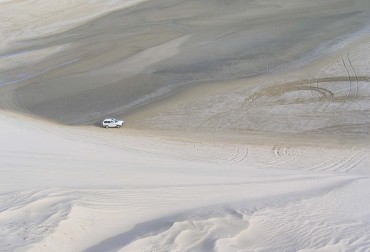
Khor Al-Adaid
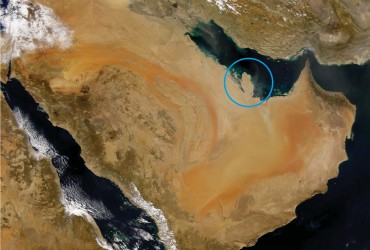
Arabian Peninsula with Qatar
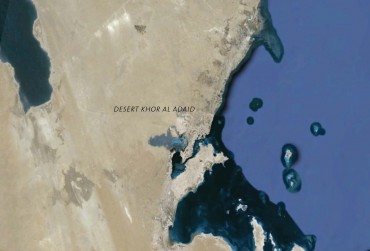
The South of Qatar
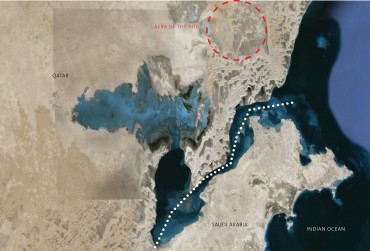
Khor Al-Adaid Desert
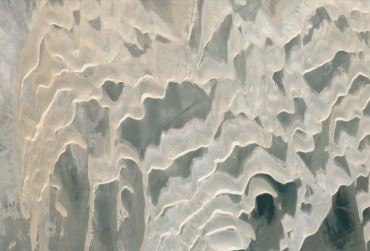
Texture of the Dunes
19.12.2012 – Issue 10 - In the Desert – Sauter Florian – Videos, Reviews, Studio
Natural Conditions: An Iconographical Survey of a Hotel Project in the Khor Al-Adaid Desert
by Josep Lluís Mateo, Krunoslav Ivanišin, Ramias Steinemann, Tomeu Ramis and Florian Sauter
The desert – always moving, never static; like an ocean of sand.
TOMMASO GIOVANNOLI
An intervention without scale confronts the infinity of the territory. The limits of perception are blurred. A fort-like concrete building in the middle of nowhere: heavy and light as it hovers above ground.
SARAH BOLLIGER
A fortress-like tower complements a large underground area; both unifies the spatial strategy of ‘hollowing out.’ In the tower the walls become space-containing membranes; in the underground the earth with its heavy insulation protects the private rooms and areas for recreation. Precise spatial articulation of the intersection with the ground and the further landscape – scenic modulation of the chambers in response to changing programmatic needs and views.
Vanishing tracks that constantly shift their position. The only thing permanent remains the impermanent.
PETER BOLLER
A compact mass growing out of the earth. Tall crevices let cool air pass, but not the relentless sun. A system of ‘urban’ passageways and plazas turns the big house into a small city.
MAXIM MOSKALENKO
Extreme verticality meets pre-dominating horizontality: porous like a sieve this glassless ‘ruin’ gives shape to a multitude of hanging gardens high up in the air. Detached from the ground, the views into the far distance arouse a sublime feeling of loneliness when confronted to something so much bigger.
The beginning of the desert – its limits, where plants lend stability to the dunes. Patterns of growth follow a geo-physical logic in relation to wind patterns and sun-movement. Immediately when it rains more vegetation will prop up.
CHRISTOF HEIMBERG
Inventing the landscape: stones lend stability to the sand, set points of rest and calm; they counteract as points of reference the sinuous lines of the endless horizon. Telling its epic story, the cloister affords a paragon of self-reliance in such dramatic natural conditions. Austerity as a way of luxury – a conglomerate of cells and patios affords privacy and space for easing.
Gradually the dunes turn into mountains. With the size, also the risks and dangers increase.
MICHÈLE SKARPETOWSKI
Oasis of trees and pillars – a canopy of concrete surfaces provides shade to a courtyard and the adjacent earth-covered chambers beneath. Water takes the stage as a psychological catalyzer when miraculously married to its mutual counterpart sand: Like a Fata Morgana every project starts in the vague depths of the unknown. The project as a climatological tool: Earth and air offering two complementary modes of relief when mitigating heat and glare.
One sun, one god. Travels by day and rests at night just like the bedu. A spectacle of time is this ball of light - friend and enemy at the same time.
ANDREA CLASSEN
An abstract, square volume levitates above ground to generate a covered plaza below and a labyrinthic network of narrow corridors and sophisticated rooms above. Attuned are the structural and spatial structure: four cores carry eight cross bars that together with the outer tension ring afford flexibility to the public spaces below and a quasi-courtyard situation for the private chambers above. While the landscape seems to disappear as a distant image behind the concrete frame of the outer wall, the disorientation resulting from the interior composition re-awakens its ‘lost’ spirit. Providing small patios with an undisturbed view of the sky, it is ultimately in the celestial order where one can find peace and rest in vast places like these.
The Inland Sea, where sand and water meet.
Edited by Florian Sauter
Download article as PDF

